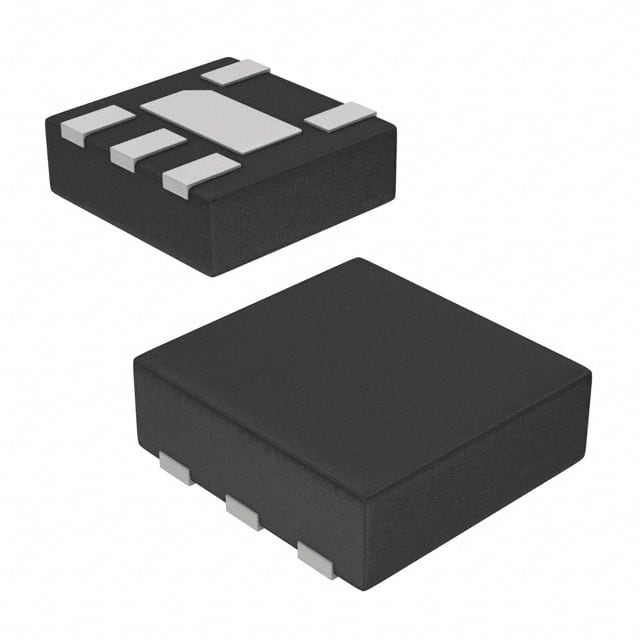Viz Specifikace pro podrobnosti o produktu.

ISL29000IROZ
Product Overview
The ISL29000IROZ belongs to the category of ambient light sensors. It is commonly used in electronic devices to measure the intensity of ambient light and adjust the display brightness accordingly. The sensor is known for its compact size, low power consumption, and high sensitivity. It is typically available in small surface-mount packages and is often used in smartphones, tablets, laptops, and other portable electronic devices.
Package: The ISL29000IROZ is typically available in a small surface-mount package, making it suitable for integration into compact electronic devices.
Essence: This sensor plays a crucial role in enabling automatic adjustment of display brightness based on ambient light conditions, enhancing user experience and energy efficiency.
Packaging/Quantity: The sensor is usually supplied in reels or trays, with quantities varying based on the manufacturer's specifications.
Specifications
- Operating Voltage: 2.5V to 3.3V
- Ambient Light Range: 0.01 lux to 64,000 lux
- Low Power Consumption: Typically consumes less than 1mW in active mode
- I2C Interface: Allows for easy integration with microcontrollers and other digital systems
Detailed Pin Configuration
The ISL29000IROZ typically features a standard pin configuration, including power supply pins, I2C communication pins, and output pins for ambient light intensity data.
Functional Features
- High Sensitivity: Capable of accurately detecting ambient light levels across a wide range.
- Low Power Consumption: Ideal for battery-powered devices, as it minimizes energy usage.
- Digital Output: Provides ambient light intensity data in a format that can be easily processed by microcontrollers and digital systems.
Advantages and Disadvantages
Advantages - Compact Size: Enables integration into small form factor devices. - Energy Efficiency: Contributes to longer battery life in portable electronics. - Accurate Sensing: Provides reliable ambient light intensity measurements.
Disadvantages - Limited Range: May not be suitable for applications requiring extremely high or low light intensity measurements. - External Interference: Susceptible to interference from external light sources in certain environments.
Working Principles
The ISL29000IROZ operates based on the principle of photodiode-based light sensing. When exposed to ambient light, the photodiode generates a current proportional to the light intensity, which is then converted into a digital signal by the sensor's internal circuitry. This digital signal can be accessed and processed by the host device to make adjustments to display brightness or for other relevant applications.
Detailed Application Field Plans
The ISL29000IROZ finds widespread application in various consumer electronic devices, including: - Smartphones and Tablets: Enables automatic adjustment of screen brightness based on ambient light conditions, enhancing user comfort and energy efficiency. - Laptops and Notebooks: Facilitates adaptive display brightness control for improved user experience and power savings. - Wearable Devices: Supports automatic brightness adjustment in smartwatches and fitness trackers, optimizing visibility and battery life.
Detailed and Complete Alternative Models
- APDS-9300: Offers similar ambient light sensing capabilities with a different pin configuration.
- TSL2561: Provides high-resolution digital output for ambient light intensity measurements, suitable for more precise applications.
In conclusion, the ISL29000IROZ ambient light sensor offers a compact, energy-efficient solution for automatic brightness adjustment in a wide range of electronic devices. Its high sensitivity and digital output make it a versatile choice for enhancing user experience and energy efficiency in modern consumer electronics.
Word count: 498
Seznam 10 běžných otázek a odpovědí souvisejících s aplikací ISL29000IROZ v technických řešeních
What is the ISL29000IROZ?
- The ISL29000IROZ is a digital light sensor designed for accurate ambient light sensing in various technical solutions.
What is the operating voltage range of the ISL29000IROZ?
- The operating voltage range of the ISL29000IROZ is typically 2.25V to 3.63V.
How does the ISL29000IROZ communicate with microcontrollers or other devices?
- The ISL29000IROZ communicates using an I2C interface, making it compatible with a wide range of microcontrollers and devices.
What is the spectral response of the ISL29000IROZ?
- The ISL29000IROZ has a spectral response close to that of the human eye, making it suitable for applications requiring human-like light sensitivity.
Can the ISL29000IROZ be used in mobile devices?
- Yes, the low power consumption and small form factor of the ISL29000IROZ make it suitable for integration into mobile devices such as smartphones and tablets.
What is the resolution of the ISL29000IROZ?
- The ISL29000IROZ offers high-resolution light sensing with 16-bit output data, providing detailed information about ambient light levels.
Does the ISL29000IROZ have any special features for power management?
- Yes, the ISL29000IROZ includes a power-saving interrupt feature that can be utilized to minimize power consumption in battery-powered applications.
Is the ISL29000IROZ suitable for use in industrial automation systems?
- Yes, the ISL29000IROZ's wide dynamic range and high accuracy make it well-suited for integration into industrial automation systems for light level monitoring and control.
What are the typical applications of the ISL29000IROZ?
- Typical applications of the ISL29000IROZ include display backlight control, keyboard illumination, outdoor light sensing, and gesture recognition in electronic devices.
Are there any specific design considerations when integrating the ISL29000IROZ into a technical solution?
- Designers should consider factors such as placement for optimal light sensing, calibration for different environmental conditions, and proper filtering to reduce noise in the light sensor readings.

